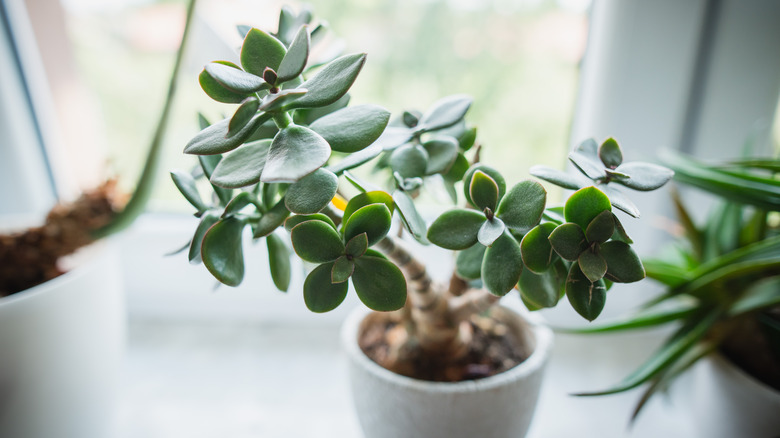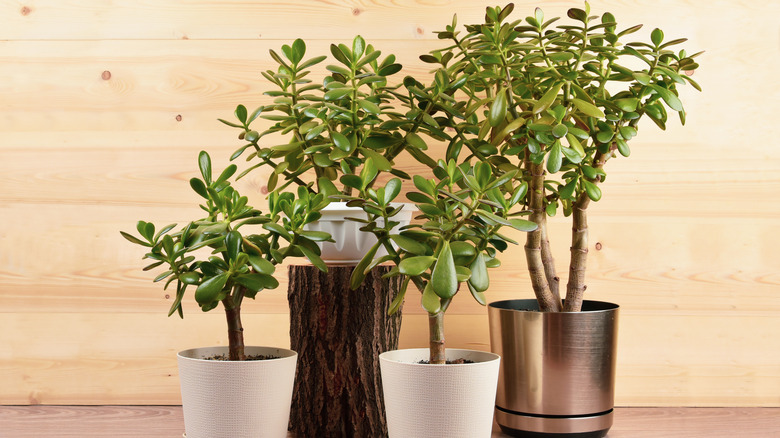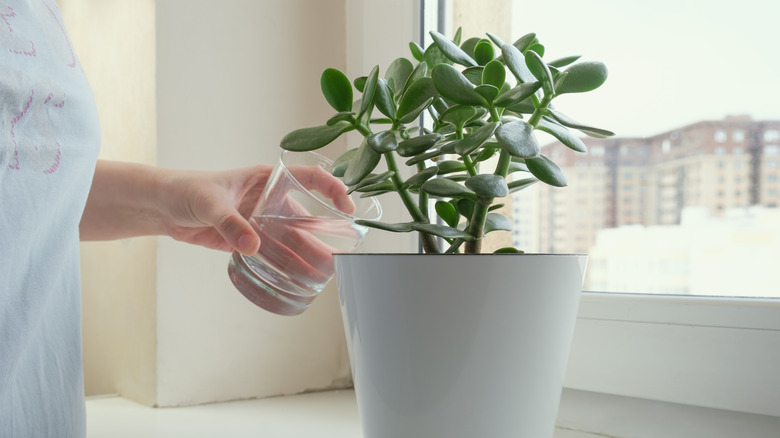Where's The Best Place For A Jade Plant In Your Home?
The jade plant (Crassula argentea) is a popular houseplant often gifted as a housewarming present for its reputation for bringing good fortune to its owners. Although it fell out of style after the 1970s, jade is regaining favor among houseplant enthusiasts for its interesting growth habit and tolerance of a range of growing conditions. Even if it does not bring you luck and fortune, this succulent is a fabulous addition to any home.
Originally from Africa, jade plants have been grown as a houseplant around the world for hundreds of years, according to North Dakota State University. In the right growing conditions, these plants can be family heirlooms since their lifespan can exceed 100 years. Inheriting a centenarian plant is a daunting prospect, so let's focus on the conditions required to keep your jade growing and thriving today. The best place for a jade plant in your home depends primarily on the amount of light in the room and the temperature of the space.
Environmental requirements for a jade plant
Since jade is native to the east and western areas of South Africa, this succulent needs a lot of sunlight to truly thrive. While it will tolerate low to medium-light conditions, it will not grow as quickly and may be more susceptible to pests like spider mites or mealybugs. A spot with a south-facing window with at least four hours of direct sun daily is perfect for your jade plant. Luckily, since this plant thrives naturally in dry conditions, it does not require extra humidity. A home's average humidity level of 30% to 40% is perfect for a jade plant to be healthy.
The daytime temperature of the average home is also ideal for jade plants. They thrive in a space between 65 and 75 degrees Fahrenheit. Although they prefer cooler nighttime temperatures of around 55 degrees Fahrenheit, they will still grow well if your home does not get that chilly at night. Jade plants do not tolerate frost, so keep their tender leaves from touching window panes during the cold winter months. If possible, protect your jade plant from cold drafts, too.
Jade plant maintenance
Jade plants do not have a lot of maintenance requirements if you grow them in the right conditions. Like most succulents and cacti, jade requires soil that does not retain too much water in a planter with good drainage. A cactus mix blended with potting soil will keep your jade's roots moist while releasing excess water that could lead to root rot. Water your plant when the soil surface is dry every one to two weeks. The soil moisture level should be similar to a wrung-out sponge — not too wet or dry. If you see spots on the leaves or notice your plant is dropping a lot of leaves, it could be a sign that it is not getting enough water.
For consistent growth throughout the year, fertilize your jade plant every four months with a standard liquid fertilizer for houseplants. Jade plants grow relatively slowly, so do not worry if you do not see exponential growth. These plants also prefer to be a bit root-bound, so it should be several years before you think about repotting. You may not need to repot it until the plant gets too top-heavy and looks like it could fall over. At that point, move it to an appropriately sized, heavy planter to keep it happily growing for many more years.


